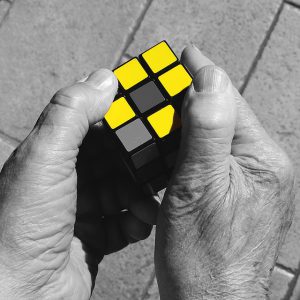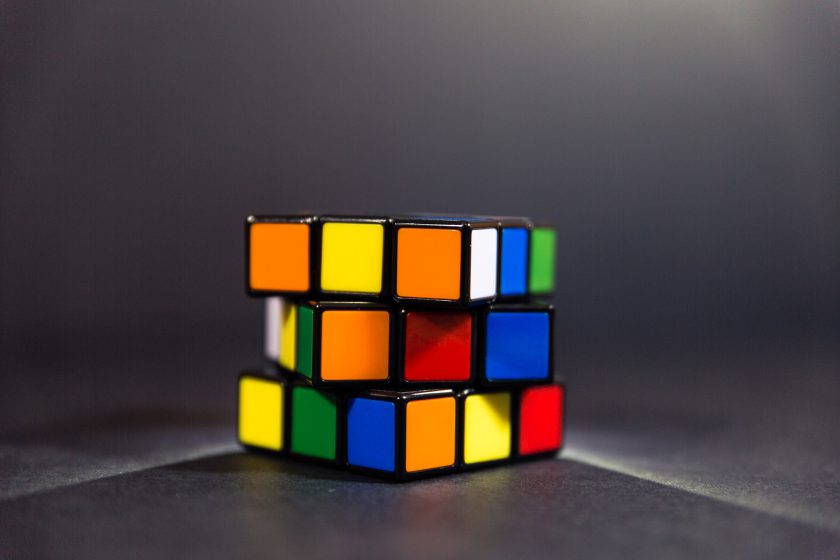If you have never seen a Rubik’s cube, it is, in its original and basic form, a cube made out 27 tiny cubes that can be rotated. The goal of this 3D puzzle is to make every side of the cube a single color for that side. Sounds simple enough – if you start playing now, you will eventually come up with a solution to the puzzle, right? It’s not as simple as that.
Combinations and Variations
 For a classic Rubik’s cube, the number of combinations is staggering. Without just giving you the number, let’s go one step at a time. First, let us figure out how many pieces we can move and how many positions they can occupy. Since the centers of the cube are what holds the rotating center together, they don’t count, or rather, we count them separately since they always occupy the same position.
For a classic Rubik’s cube, the number of combinations is staggering. Without just giving you the number, let’s go one step at a time. First, let us figure out how many pieces we can move and how many positions they can occupy. Since the centers of the cube are what holds the rotating center together, they don’t count, or rather, we count them separately since they always occupy the same position.
We have 8 corner pieces that can occupy 8 different positions. In other words 8! of combinations. We have 12 side pieces, which, again, are in 12 different positions – 12!. Next, we need to consider the fact that 8 corners each have three different ways to be placed once they are settled in their position. That’s 38 of combinations. Every side piece has two placements in their position, so that’s 212. We now multiply these numbers together. Pro tip: your pocket calculator probably won’t work here.
 Unfortunately, this number allows us to come up with combinations that you will not normally find on a Rubik’s cube, save some tampering in the form of breaking a piece off or taping the cube differently.
Unfortunately, this number allows us to come up with combinations that you will not normally find on a Rubik’s cube, save some tampering in the form of breaking a piece off or taping the cube differently.
The next step is to divide the total with the number of parities, or, more accurately parity errors, on the cube. Corner pieces have three positions, side pieces have two, and you could potentially pick a piece and swap it with another piece, which means two parity errors there. So it’s 2x3x2, or 12. If we divide the previous number with 12, we get a number that is slightly higher than 43 quintillions.
Interestingly enough, the permutations for the 2x2x2 cube come to ‘just’ 3,674,160. Using the pattern from above, you are more than welcome to try and calculate the number of permutations of a 5x5x5 cube. As you know, there are even harder cubes out there.
God’s Number
God’s number is the smallest number of moves needed to solve a Rubik’s cube from any position except for the illegal ones that contain parity errors. The latest estimate is that you can solve the Rubik’s cube in 20 moves. In other words, if you know how, it should not take you more than twenty moves to solve the cube.

